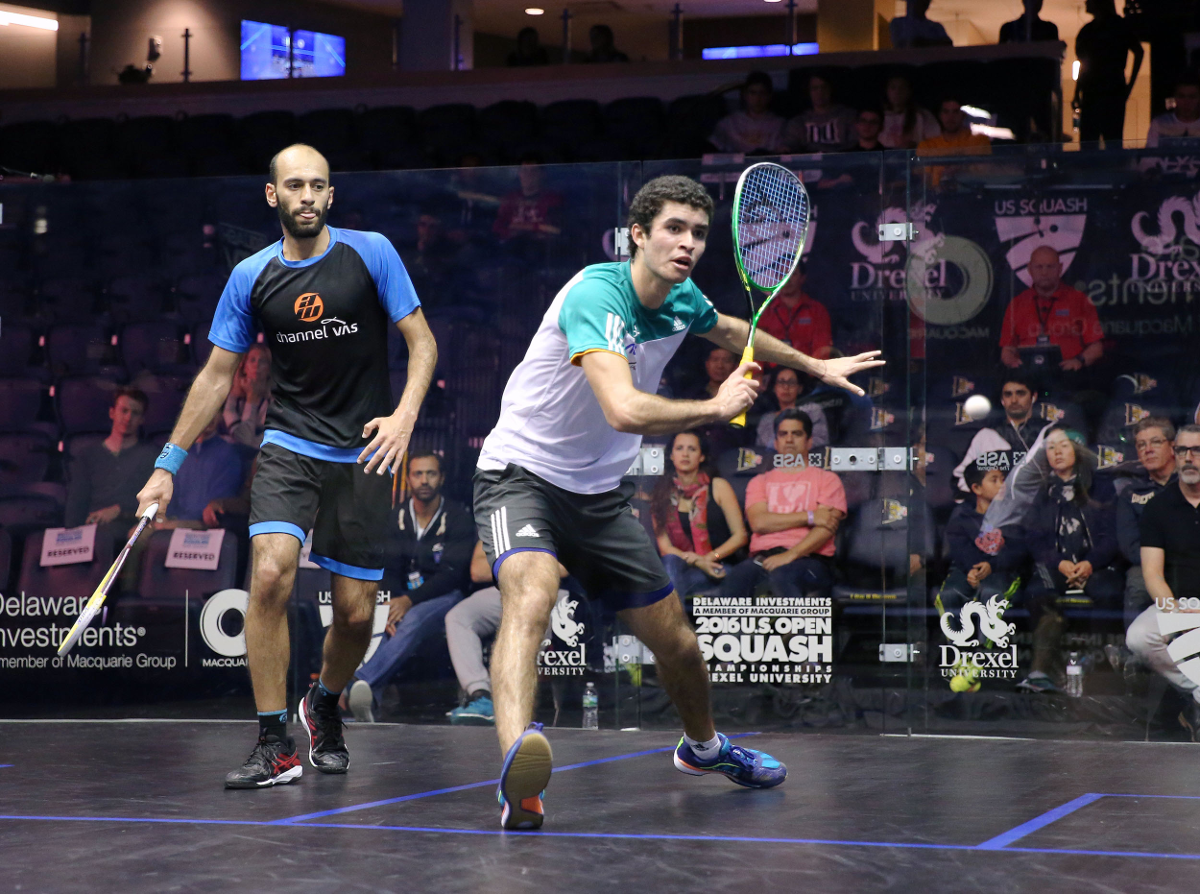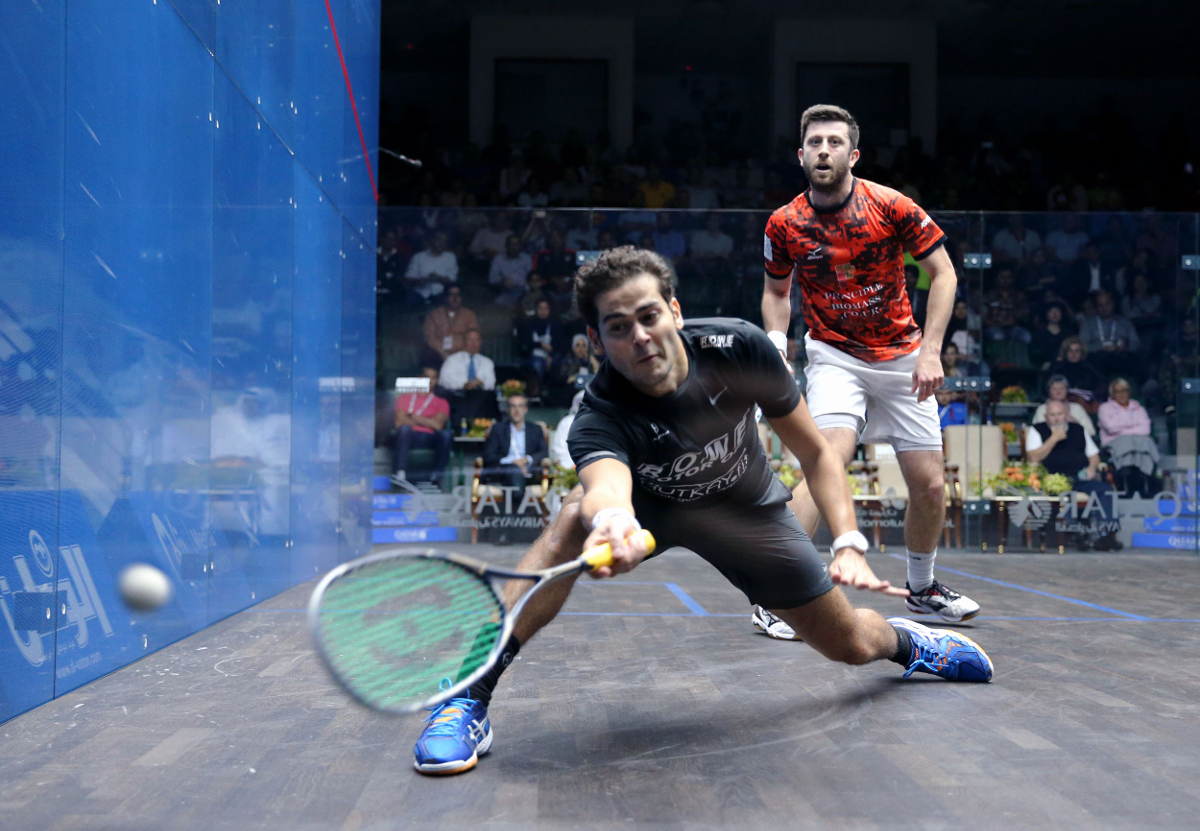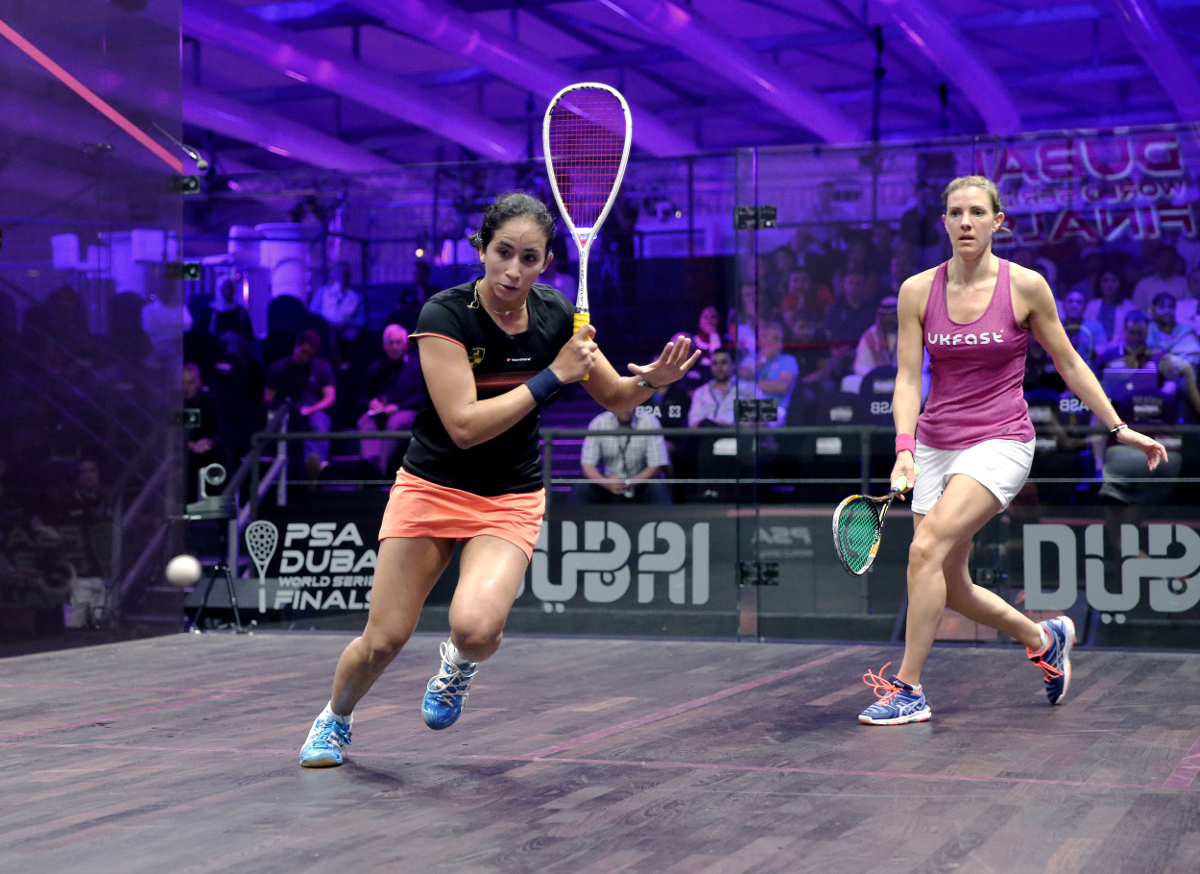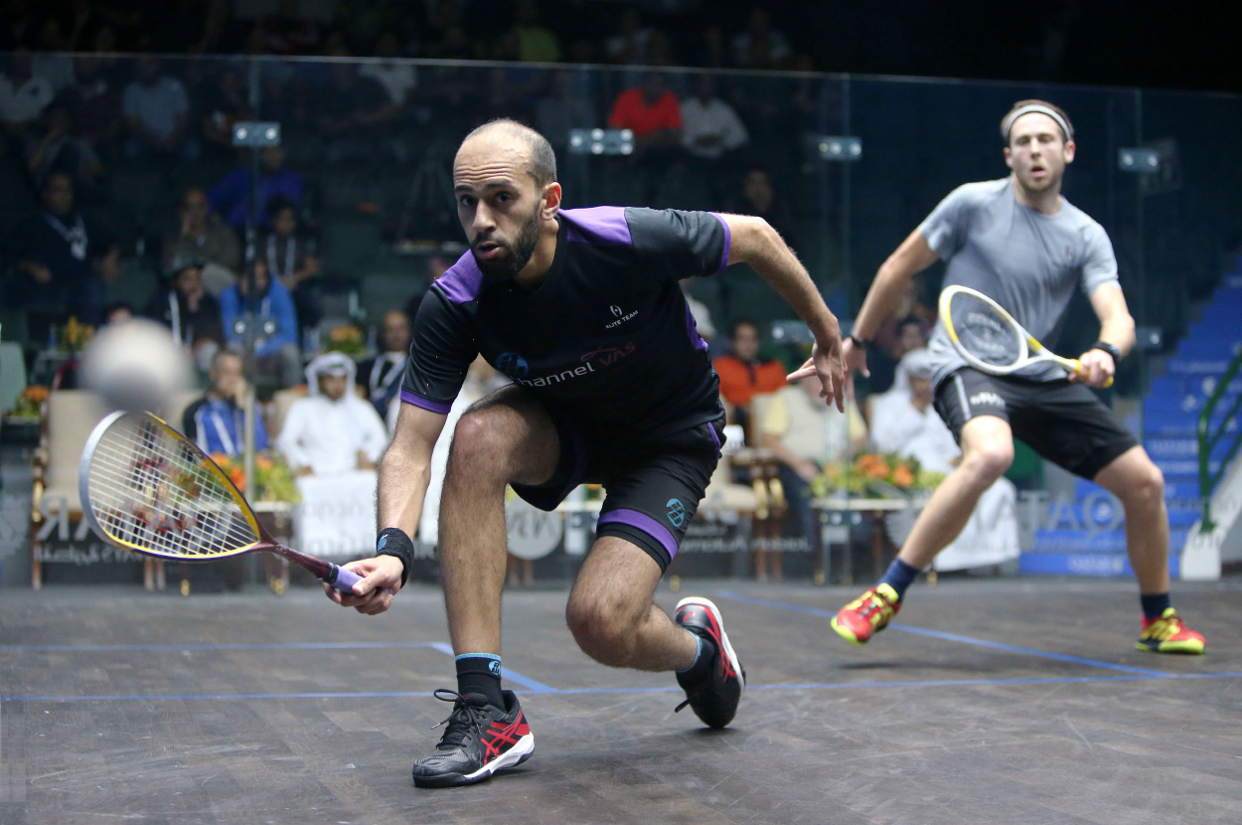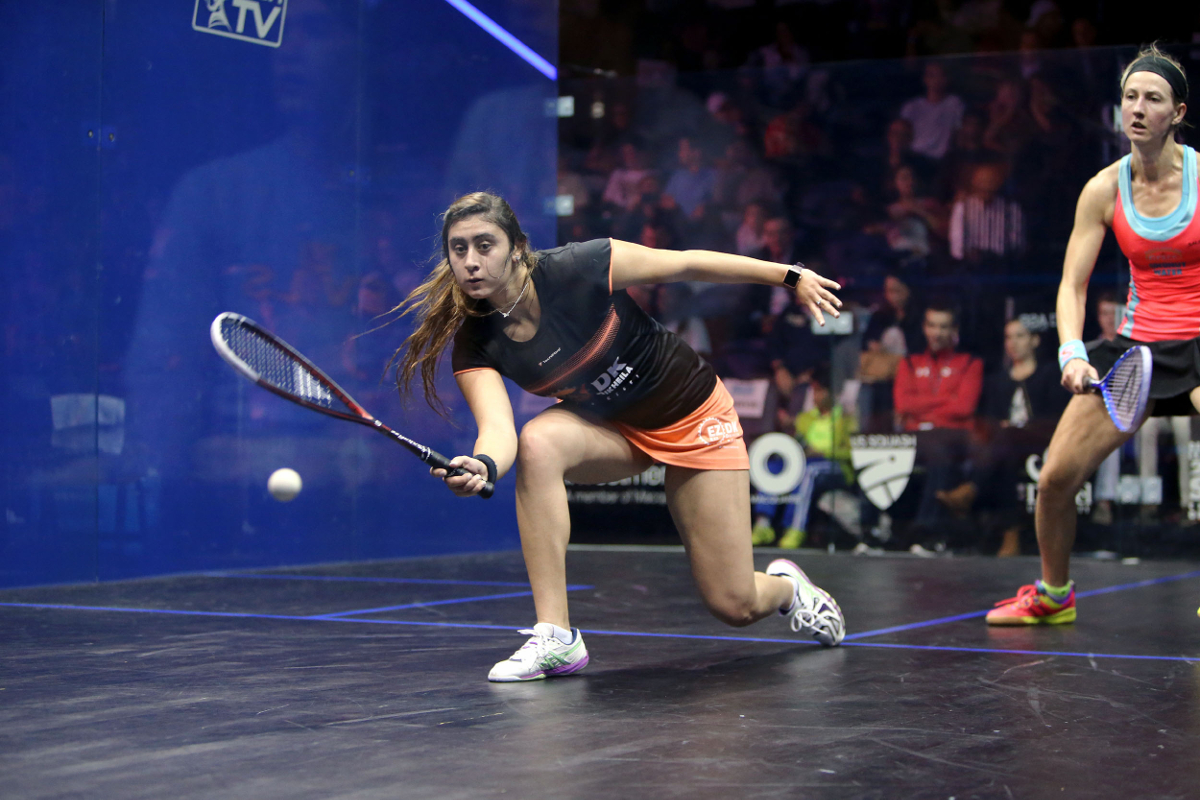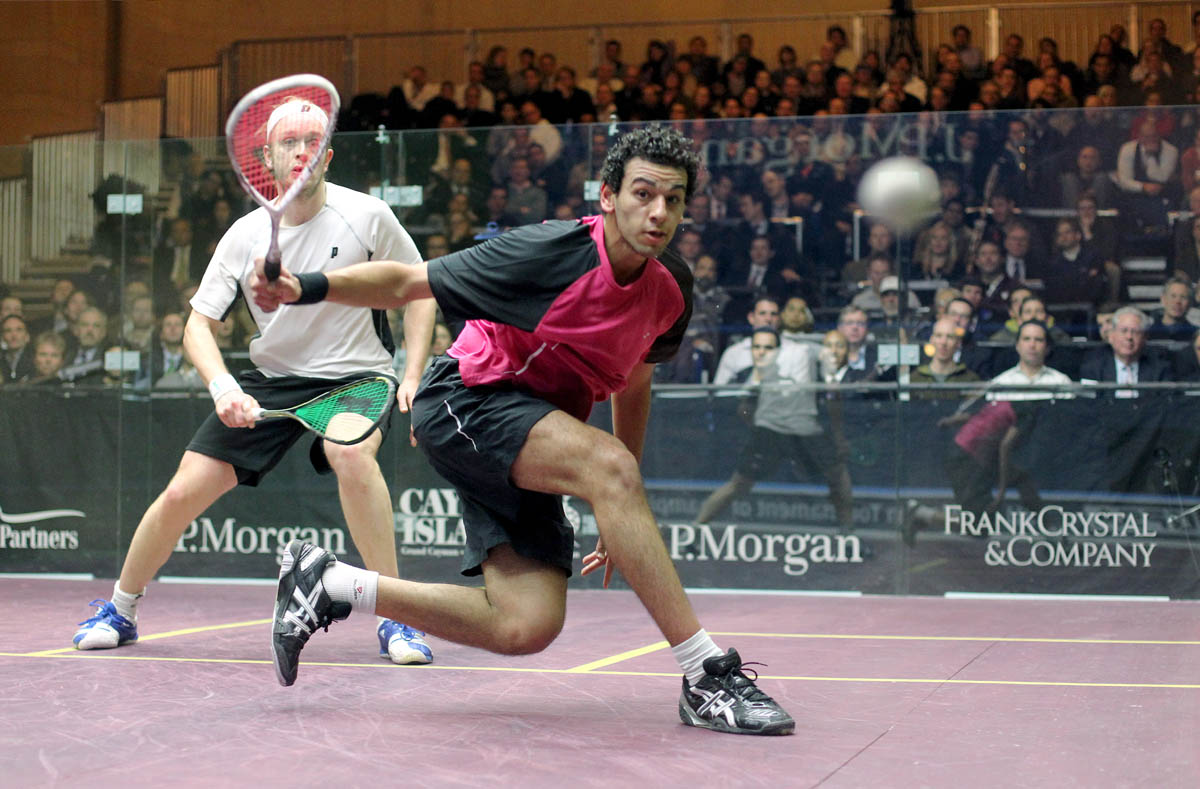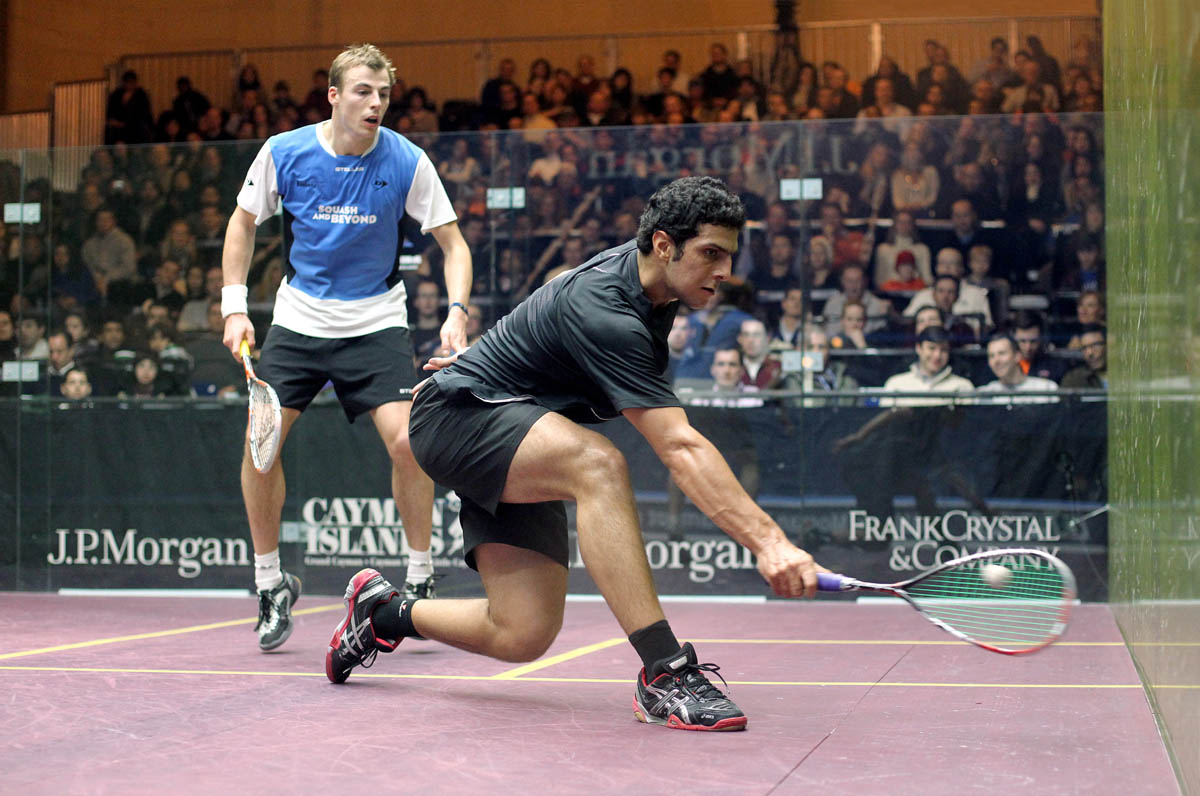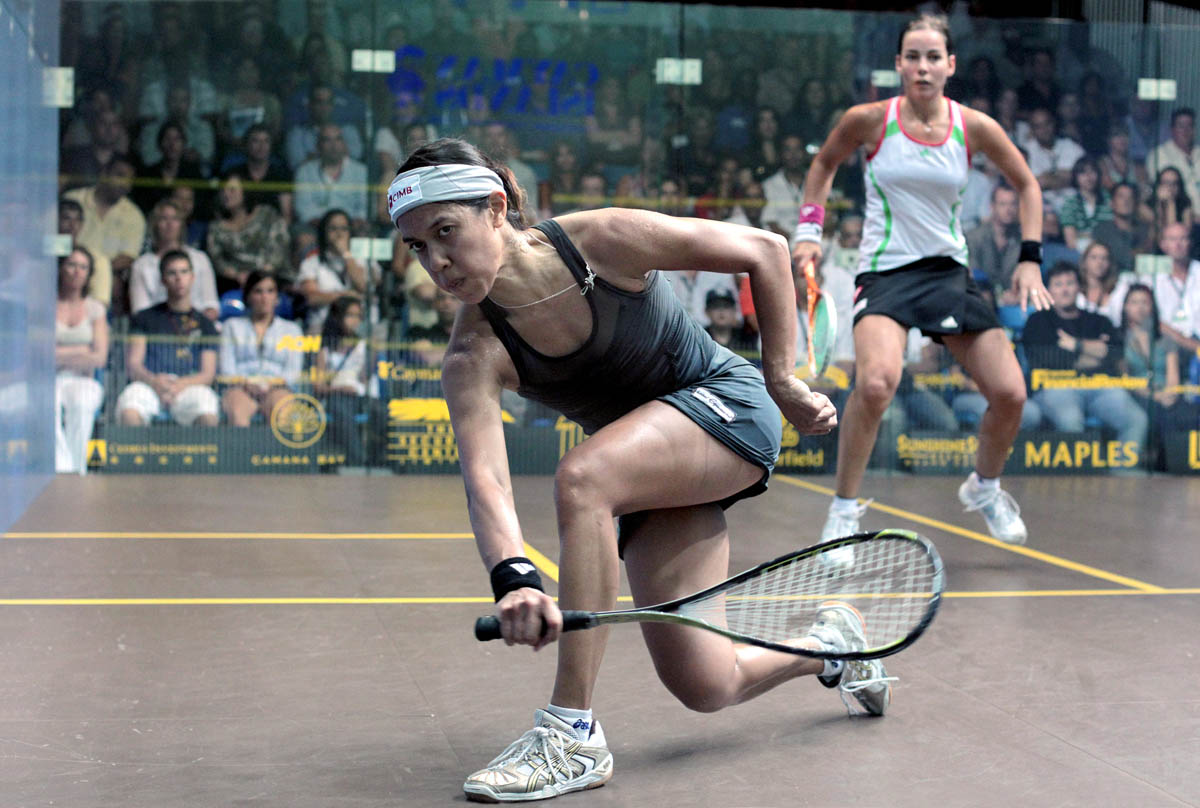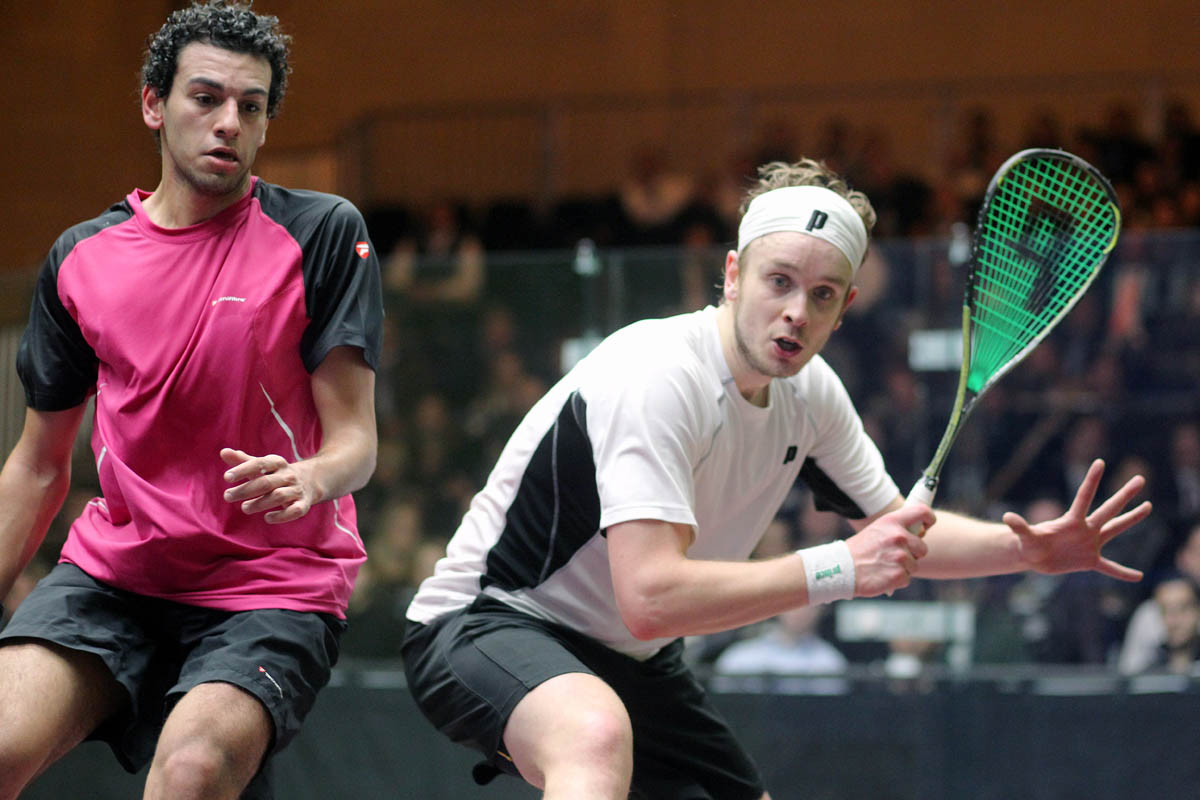The Backhand Open Plane Swing
Introduction
The Backhand Open Plane Swing is not a singular basic technique but a basic swing which leads into three basic swings. Consequently, there are no negative aspects (Cons). This is excluding non-basic technique, that is, improvised technique. The challenge for the player is to identify which swing to use.
Before opening the following videos, please visit Main Menu Technical.
The Backhand Open Plane Swing
The Backhand Open Plane Straight, Drive Cross Court Drive and Boast all use The Backhand Open Plane Swing's technique.
This occurs when the ball is between waist height and ankle height and the player wants to either straight drive, cross court drive or boast. Furthermore, the player if volleying uses the identical technique.
Initially, The Backhand Open Plane Swing is the swing that the player should adopt.
The Backswing
The start of the backswing leads into The Backhand Open To Closed Plane Swing and The Backhand Open To Extended Extended Plane Swing.
The backswing is compact which encourages the player to take the ball early at and above waist height.
The Forward Swing
The forward swing is compact but not powerful.
Also, the swing is designed for volleying, lobbing and dropping.
The Step Hit
When learning the swing, the player learns the importance of The Step Hit and step recovery.
Furthermore, the ball should be fed slowly when learning The Step Hit and step recover.
The Clock
A diagrammatical perspective that the player uses to assist when identifying the natural contact point for The Backhand Open Plane Straight Drive.
Furthermore, the natural contact point (regardless of quality) for the straight drop is relevant to the player’s position on the court regardless of the height of the ball when being hit.
This perspective encompasses the ball’s approximate 9.30 o’clock time position (circumference) which is the general direction of The Step Hit the player has to take and also the player’s radius distance (the hand of the clock) of the Step Hit which is needed to contact the ball.
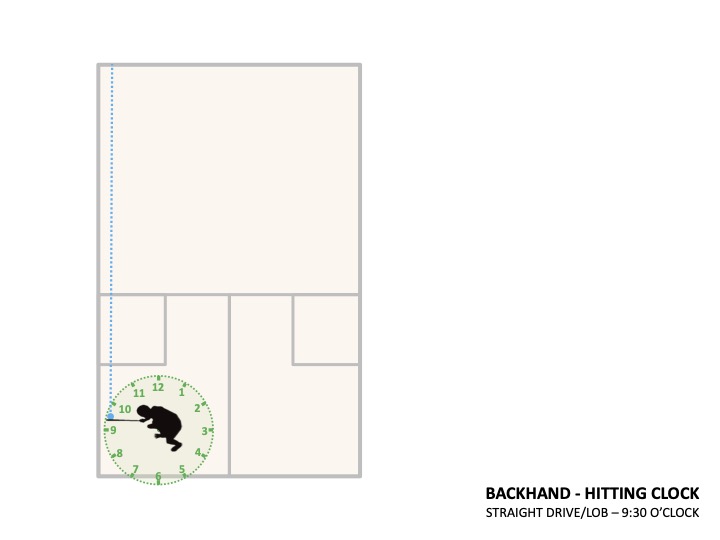
The Backhand Open Plane Straight Slice Drop (The focus is mainly on the arm and racquet).
Furthermore, when slice volleying the ball between waist height and knee height the technique is identical.
The Clock
The Clock is a diagrammatical perspective that the player uses to assist when identifying the natural contact point for The Backhand Open Plane Straight Slice Drop.
Remember, the natural contact point (regardless of quality) for the straight drop is relevant to the player’s position on the court regardless of the height of the ball when being hit.
This perspective encompasses the ball’s approximate 9 o’clock time position (circumference) which is the general direction of The Step Hit the player has to take and also the player’s radius distance (the hand of the clock) of the Step Hit which is needed to contact the ball.
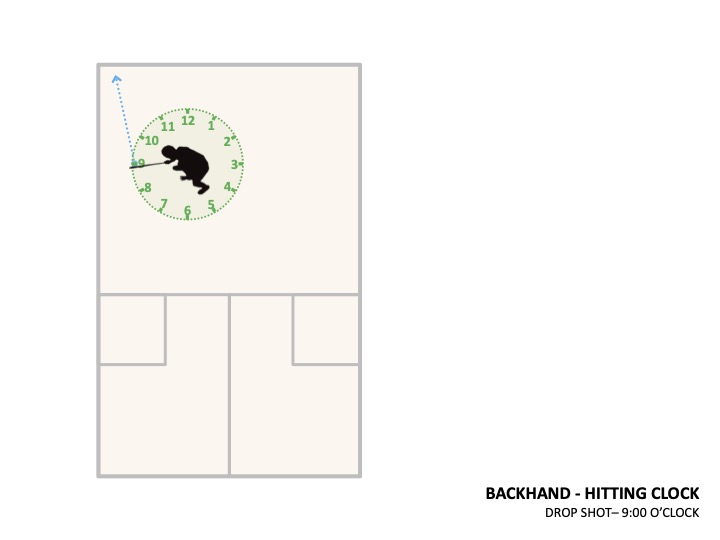
Introduction - The Definition
Part 1
The Definition.
The Backhand Open Plane Straight Slice Drop is defined as after identifying that the ball is on the backhand side the player reacts with The Backhand Open Plane’s backswing.The player leads the racquet head on the backswing by opening the racquet face to an angle between 30 and 45 degrees and maintaining the angle prior to the forward swing beginning.
The player commences the forward swing with a measured (slow) and steep throwing action as if throwing a Frisbee but with a cocked wrist and leading the elbow while simultaneously opening the racquet face to an extra angle of approximately 10 to15 degrees to a total angle between 40 and 60 degrees before attempting to return the racquet face to the original angle between 30 and 45 degrees at contact.
The Backswing
Part 2
The start of the backswing is simplistic allowing the player to quickly find the angle for the drop
The Forward Swing
Part 3
Slightly opening the face at the start of the forward swing to an extra angle of approximately 10 to15 degrees before returning the racquet face to the original angle between 30-45 degrees at contact allows the player to have a natural follow through.
The Backhand Open Plane Straight Slice Drop
The Clock
Part 4
The Clock is a diagrammatical perspective that the player uses to assist when identifying the natural contact point for The Backhand Open Plane Straight Slice Drop.
This perspective encompasses the ball’s approximate 9 o’clock time position (circumference) which is the general direction of The Step Hit the player has to take and also the player’s radius distance (the hand of the clock) of the Step Hit which is needed to contact the ball.
The Backhand Open Plane Swing Straight Slice Drop The Clock Direction
The player’s required direction relevant to The General Hitting Zone is achieved by: The Clock Direction a diagrammatical perspective that the player uses to assist when identifying the direction required to move to The General Hitting Zone. Example:When the player moves forward from the T to play The Backhand Open Plane Straight Slice Drop.
Part 5
The player’s required direction relevant to The General Hitting Zone is achieved by: The Clock Direction a diagrammatical perspective that the player uses to assist when identifying the direction required to move to The General Hitting Zone for The Backhand Open Plane Straight Slice Drop.
On this occasion the perspective encompasses: The player’s initial positioning “On The T”: The General Hitting Zone at approximately 10 o’clock time position (on the circumference) which is dependant on the opponent’s shot: The direction the player has to take (the hand of the clock) which is the distance (radius) to The General Hitting Zone.
The Backhand Open Plane Cross Court Lob
When the player is positioned Back
The Clock
Unlike the backhand drop shot which has a natural contact point at approximately 9 o'clock, the lob has a natural approximate range (contact points) between 11 o'clock and 10 o'clock.
A diagrammatical perspective that the player uses to assist when identifying the natural contact point for The Backhand Open Plane Cross Court Lob
In this example, this perspective encompasses the ball’s approximate 10 o’clock time position (circumference) which is the general direction of The Step Hit the player has to take and also the player’s radius distance (the hand of the clock) of the Step Hit which is needed to contact the ball.
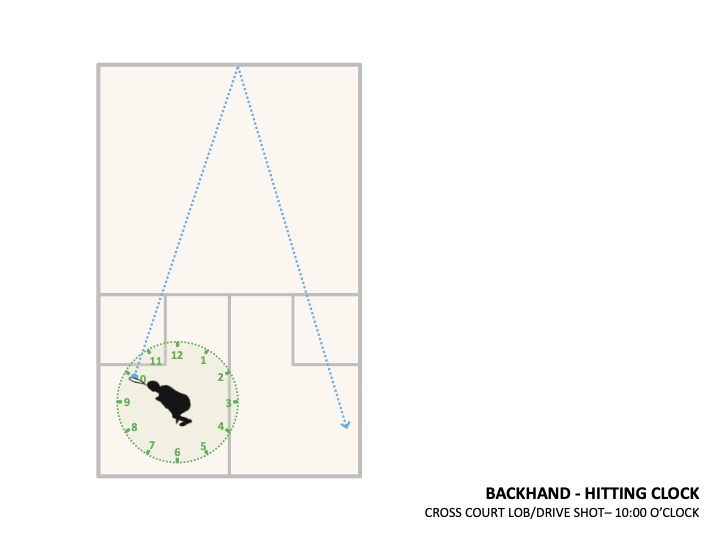
The player uses the Clock Direction to assist when moving to the ball
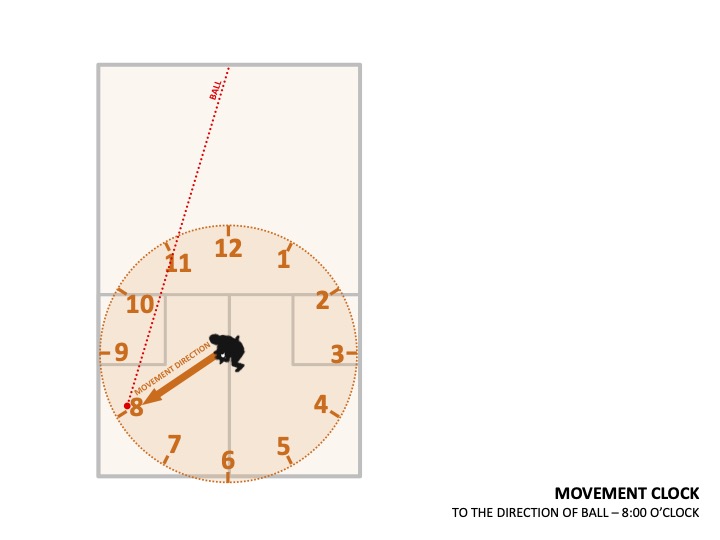
The Backhand Open Plane Cross Court Lob
When the player is positioned Forward
The Clock
A diagrammatical perspective that the player uses to assist when identifying the natural contact point for The Backhand Open Plane Cross Court Lob
In this example, this perspective encompasses the ball’s approximate 10 o’clock time position (circumference) which is the general direction of The Step Hit the player has to take and also the player’s radius distance (the hand of the clock) of the Step Hit which is needed to contact the ball.
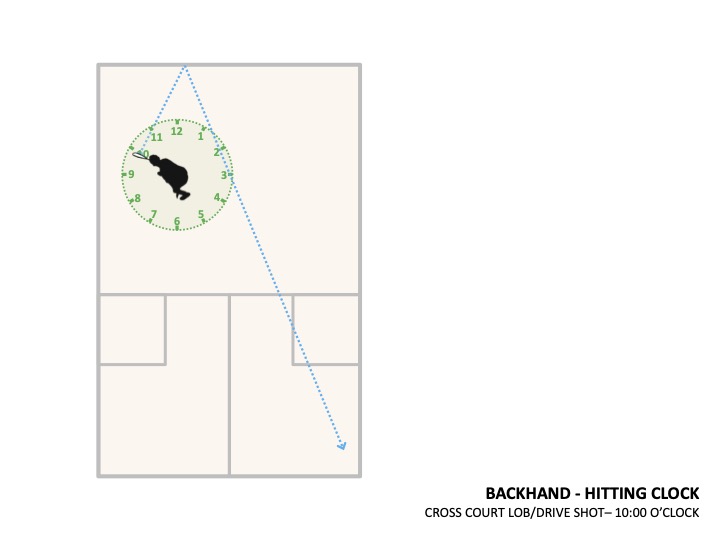
The Backswing
Part 1
As the backswing of The Backhand Open Plane is low when playing a cross court lob, unless a reflex is required, there is no need to use The Backhand Open To Extended Plane Swing
The Forward Swing
Part 2
The player uses The Clock Direction when identifying the general hitting area between 10 and 11o’clock. And then uses The Clock to find the actual contact points at approximately 10.o'clock and approximately 10.30 o'clock, respectively.
Diagrams coming...
The low forward swing allows the racquet face to square on contact in a direction high on the front wall
The Backhand Open Plane Swing - Volleying
The Backhand Open Plane Straight Defensive Volley Drive, Straight Attacking Volley Drive and Straight Volley Drop Part 1 The Backswing
As the ball’s contact point gets higher the elbow point rises more which simultaneously lowers the racquet head. Furthermore, the player also leans backs more by further aching at the side.
The Backhand Open Plane Straight Defensive Volley Drive, Straight Attacking Volley Drive and Straight Volley Drop Part 2 The Forward Swing
Copyright South Australia Squash Academy Michael Nash All Rights Reserved


